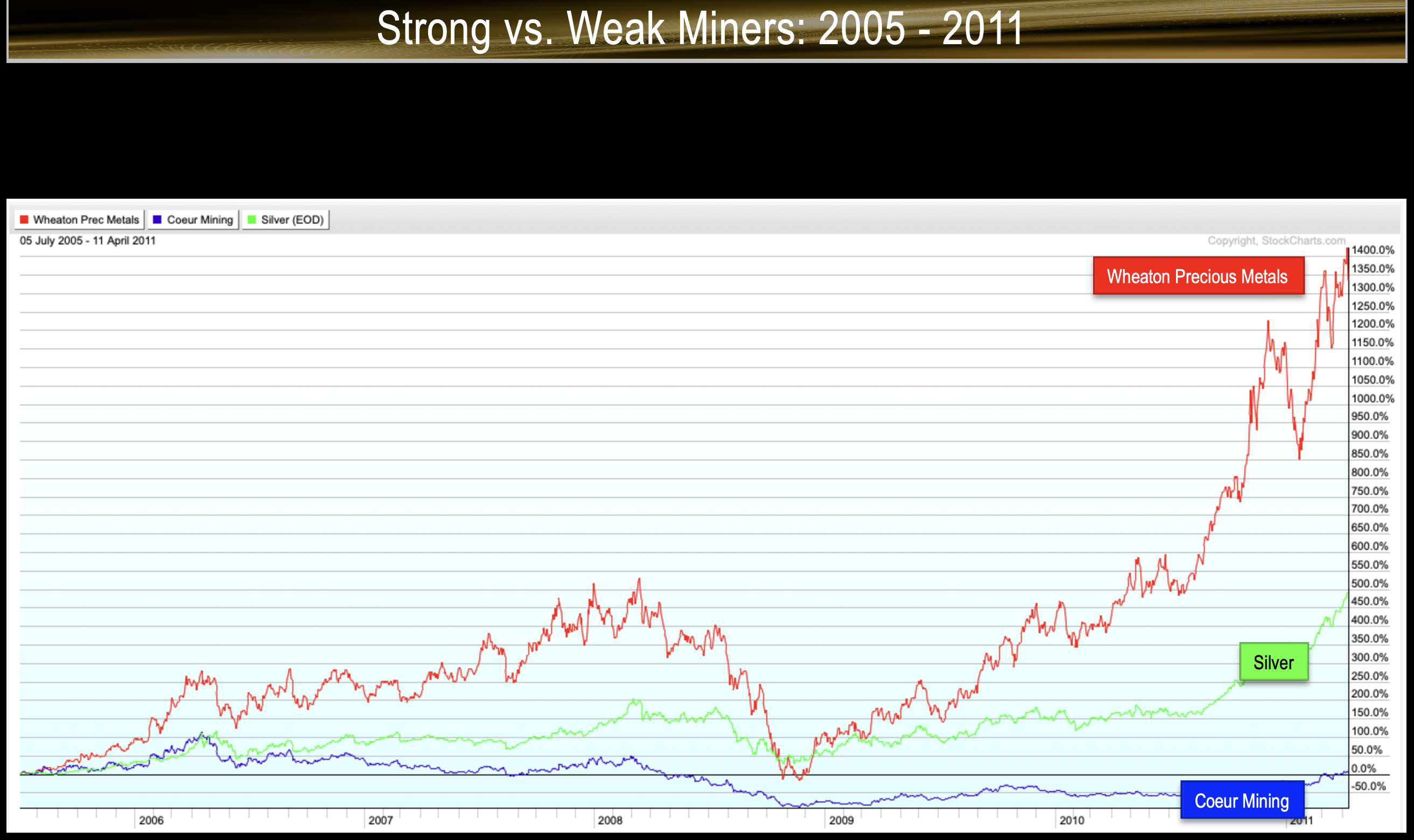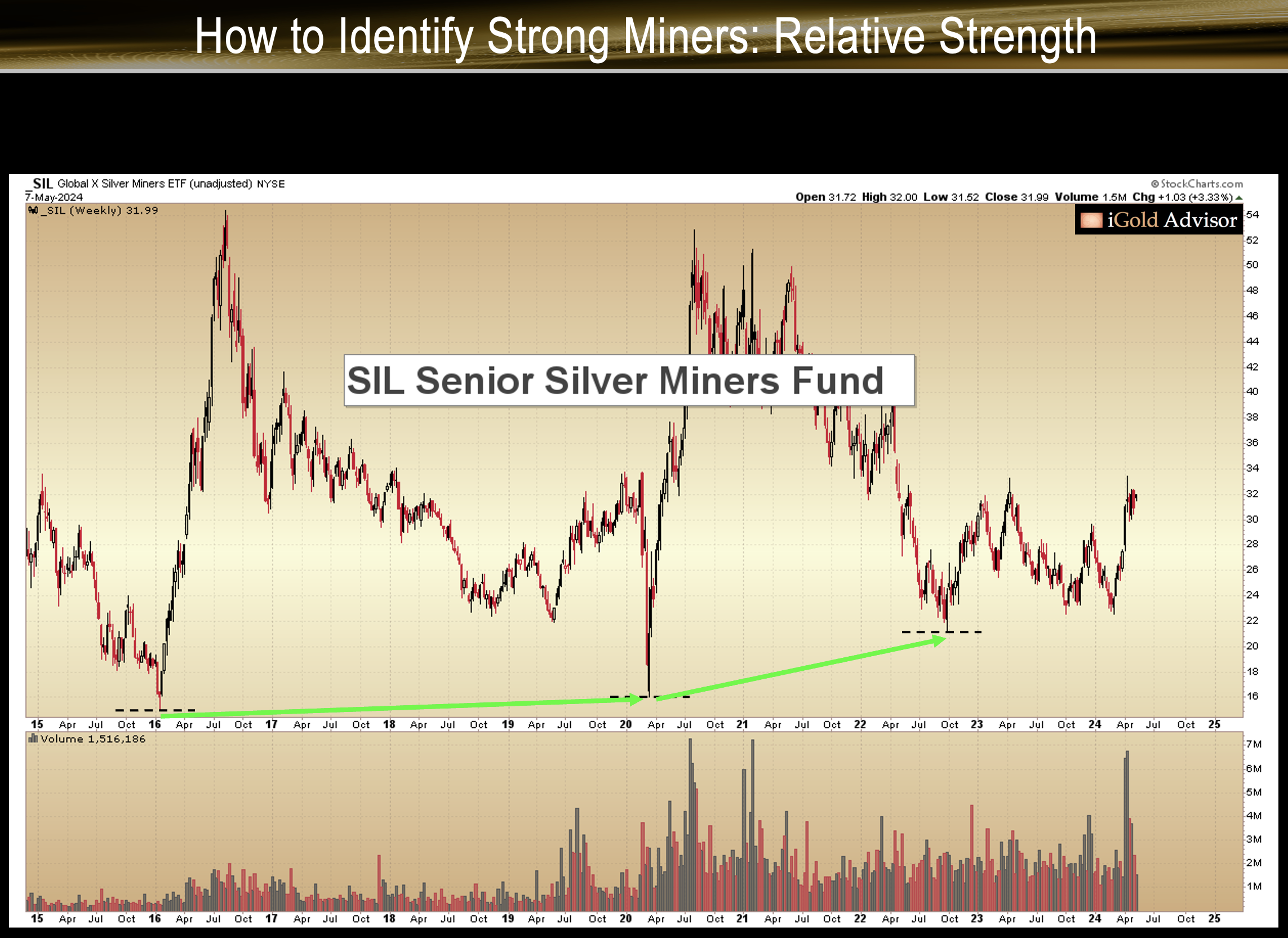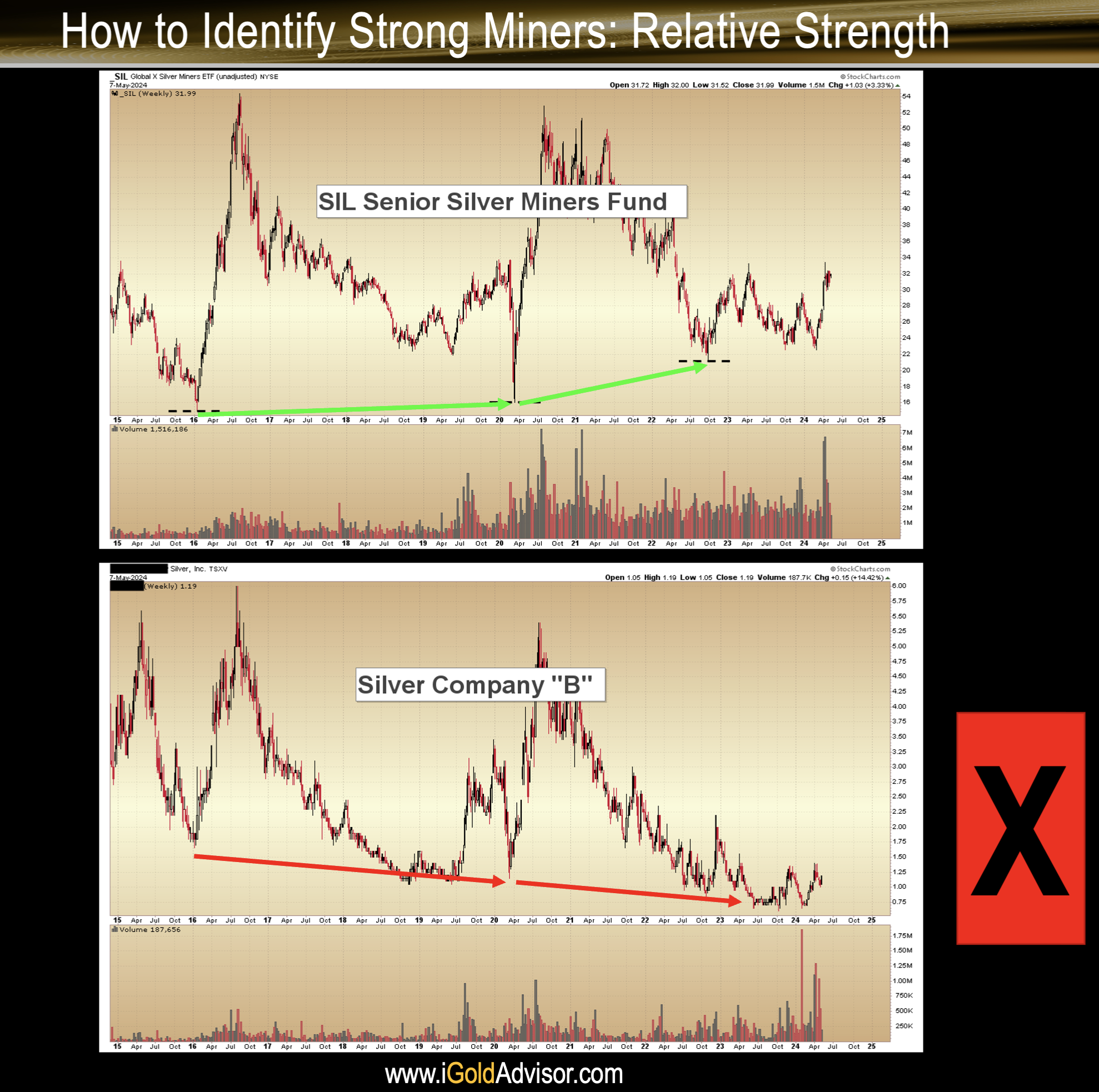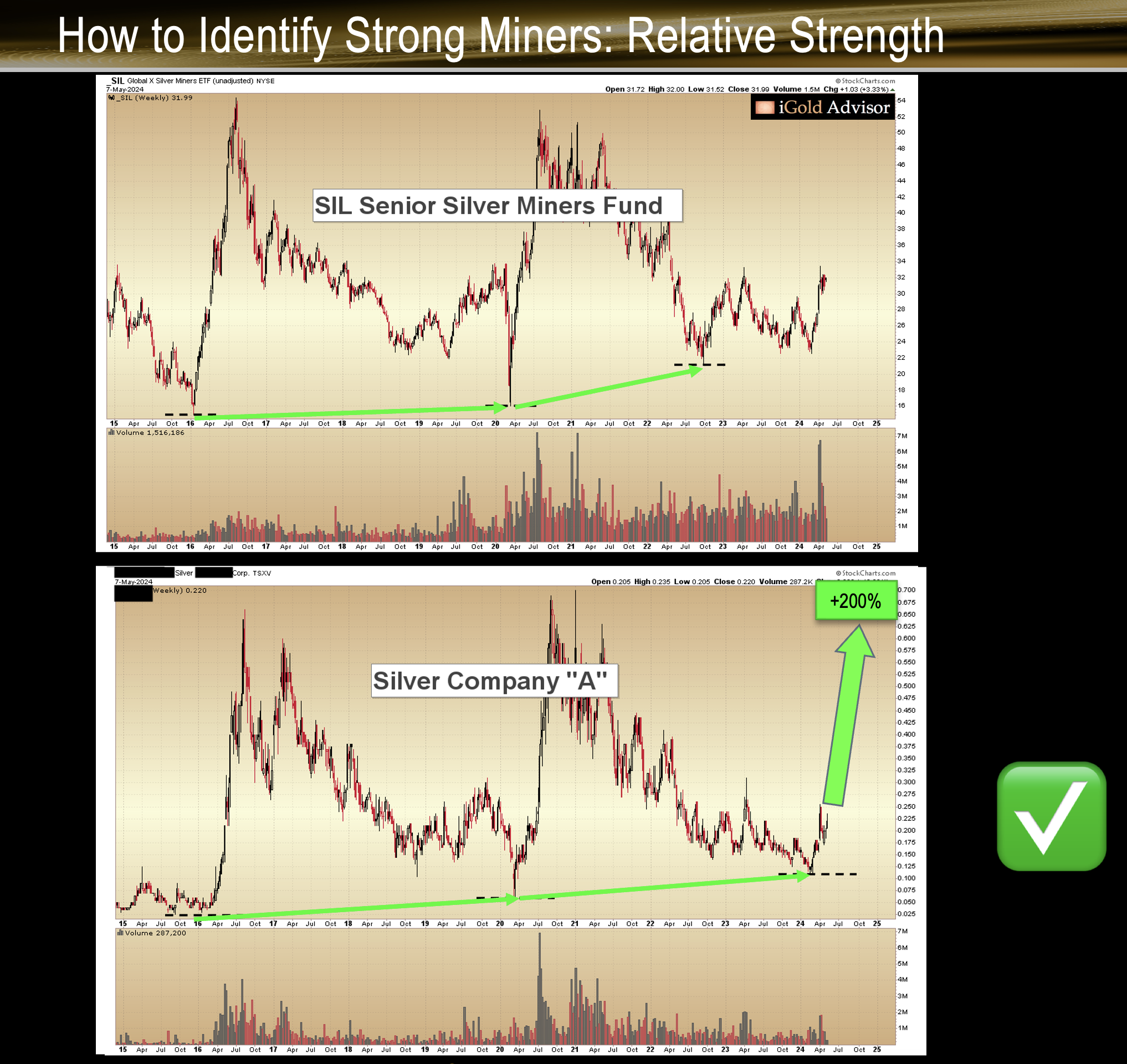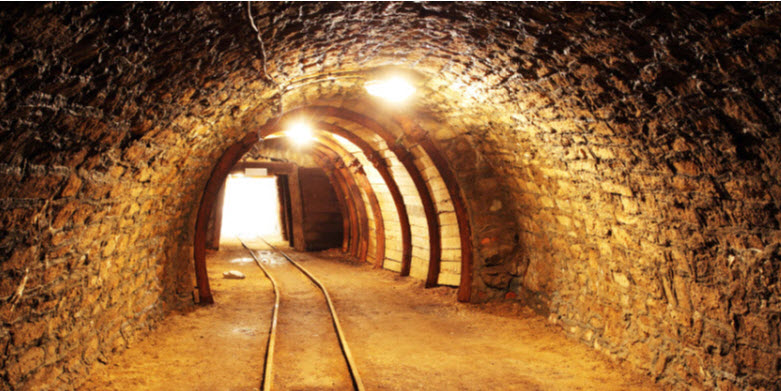 There is a secret tool available to investors who are attempting to identify winning silver and gold mining companies. Indeed, it makes a tremendous difference which mining companies investors choose: consider that from 2005 – 2011, as silver bullion rose 500%, shares of a strong silver company at the time, Wheaton Precious Metals, leveraged that gain by concurrently rising 1,400%.
There is a secret tool available to investors who are attempting to identify winning silver and gold mining companies. Indeed, it makes a tremendous difference which mining companies investors choose: consider that from 2005 – 2011, as silver bullion rose 500%, shares of a strong silver company at the time, Wheaton Precious Metals, leveraged that gain by concurrently rising 1,400%.
However, shares of a weak silver company, Coeur Mining, rose only 15% during this period:
1,400% versus 15% in six years – quite a difference for two companies which are supposedly in the same business: producing silver!
However, just because Wheaton was a strong company in the 2005 – 2011 cycle does not necessarily mean that it will be again in the present cycle. For investors who want to find the next round of strong companies, there is a little-known technical screen which investors can use: relative strength.
Relative Strength
Relative strength (RS) is a measure of how a particular asset is performing relative to an industry standard or index. For example, we could measure how a particular Dow Jones company is performing relative to the entire Dow Jones Industrial Average. Strong RS companies will outperform the average at major junctions, while weak RS companies will underperform at those same intervals.
Let us consider silver mining companies now. The sector average we will be concerned with is the SIL senior silver miners fund, which measures the performance of approximately 30 silver miners (we could likewise use the GDX to measure the sector average for gold miners). The SIL fund is shown below:
Note the major lows: 2016, 2020, and 2022 (black dashed lines). Note how the average of the 30 companies in the SIL witnessed a higher low in 2020 compared to its 2016 low (green arrows). Then again in 2022, the sector witnessed a higher low compared to its 2020 low.
These major lows are our industry standard for performance.
A Weak Silver Mining Company
Now, to separate weak from strong silver miners for the upcoming cycle, let us first examine a weak RS candidate, silver miner “B”
Note how Silver Company “B” did not witness higher lows in 2020 and 2022 as did the SIL fund. Instead, Company “B” witnessed lower lows in 2020 and again in 2022.
This is poor RS, and it is our indication that this is a company we want to avoid for the coming cycle.
A Strong Silver Mining Company
Now we will compare this with a strong silver miner, Company “A” below:
Note how Company “A” witnessed higher lows at each major sector bottom: 2016, 2020, and then 2022.
These higher lows are our signature that this is a strong RS company. It is one that we want to place on our list of high-priority candidates for investment in the coming silver cycle.
Why Does Relative Strength Work?
Why is it that weak RS companies make lower-lows, while strong RS companies make higher-lows, at major sector bottoms?
Strong companies make higher-lows because insiders are accumulating shares near important bottoms, and/or refusing to sell their shares as a sector declines.
These insiders know about the health of their underlying business, and use temporary share price weakness to add to their positions.
Since insiders are accumulating shares, once the overall sector turns higher, fewer shares are available for the public to buy, forcing the share price higher once generalist investors return.
In contrast, weak RS companies typically have one or more of the following problems:
- Excessive share dilution in recent years,
- Over-issuance of warrants and/or options,
- Higher mining costs, or,
- Poor drill results.
We can never know all of the reasons why a company may show poor RS. However, the proof is always visible where it matters most: on the stock chart.
Is it possible for a weak RS company to advance? Of course. However, its performance will be muted by one or more of the poor fundamentals above which are contributing to the weak RS profile. Either sooner or later, these poor fundamentals will become known to the market.
No matter the reason, weak RS companies are ones that we want to avoid. There are literally thousands of publicly-traded silver and gold mining companies in the world – so why not just avoid the weak RS companies and only choose the strong ones?
Takeaway on Relative Strength for Silver and Gold Mining
Relative strength is a powerful tool available for investors to use, to help them separate the weak from the strong mining companies. Those who use it to their advantage by investing only in strong RS companies will see superior returns during the coming cycle, while those who haphazardly choose mining companies may witness inferior performance.
Remember the difference between Wheaton Precious Metals and Coeur Mining from 2005 – 2011: 1,400% versus 15% return.
Considering these life-altering possibilities, isn’t it worth it to follow this signal for one’s portfolio?
At www.iGoldAdvisor.com, we are preparing to purchase two strong RS mining companies within the next several weeks. Additionally, we offer independent evaluations of investors’ portfolios using this signal as well as a host of other proprietary technical screenings.
********

